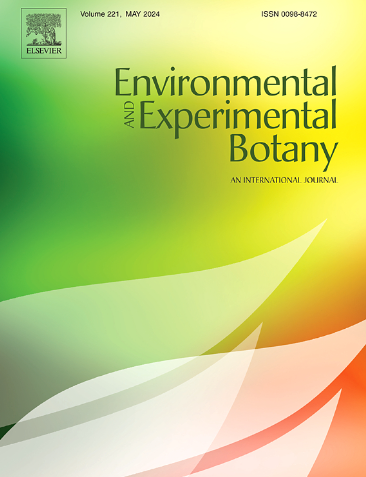原位化学成像显示了镍超富集植物黄芩根际的不同元素动员
IF 4.7
2区 生物学
Q2 ENVIRONMENTAL SCIENCES
引用次数: 0
摘要
超富集镍(Ni)植物在其地上生物量中积累的Ni质量分数超过1000 μg g−1(干重)。然而,控制超积累体获取土载Ni的过程仍然知之甚少,特别是与根诱导的根际化学变化有关。本研究利用平面光电器件和薄膜扩散梯度(DGT)的原位高分辨率化学成像技术,结合激光烧蚀电感耦合等离子体质谱(LA-ICP-MS),研究了pH随Ni、铁(Fe)、锌(Zn)、在pH值(5.9 vs. 6.5)、总Ni含量(552 vs. 1465 mg kg−1)和可提取Ni含量(42 vs. 158 mg kg−1)不同的两种超碱性土壤上生长的镍超富集植物牙根际磷(P)有效性。在两种土壤的根表面均观察到显著的根际碱化,pH值高达1.5 ,表明根渗出碱性化合物。在低镍土壤中,镍、铁和磷的通量通常在根部周围被耗尽,而镍通量的增加仅在根尖处被观察到,这突出了镍动员的独特生物地球化学生态位。相比之下,无论土壤或根类型如何,都观察到锌通量的增加,这揭示了一个以前未被认识到的根际锌有效性增强的过程。这些结果表明,石孢采用高度选择性的根际修饰策略,结合pH值变化和元素特异性动员机制来控制微量元素的有效性和植物吸收。本文章由计算机程序翻译,如有差异,请以英文原文为准。
In situ chemical imaging shows differential element mobilization in the rhizosphere of the Ni hyperaccumulator Odontarrhena chalcidica
Nickel (Ni) hyperaccumulating plants can accumulate Ni in their aboveground biomass at mass fractions exceeding 1000 μg g−1 (dry weight). However, the processes controlling the acquisition of soil-borne Ni by hyperaccumulators remain poorly understood, particularly in relation to root-induced changes of rhizosphere chemistry. Using in situ, high-resolution chemical imaging via planar optodes and diffusive gradients in thin-films (DGT) combined with laser ablation inductively coupled plasma mass spectrometry (LA-ICP-MS), this study investigated localized changes in the spatial distribution of pH along with Ni, iron (Fe), zinc (Zn), and phosphorus (P) availability in the rhizosphere of the Ni hyperaccumulator Odontarrhena chalcidica grown on two ultramafic soils differing in pH (5.9 vs. 6.5) as well as total (552 vs. 1465 mg kg−1) and extractable (42 vs. 158 mg kg−1) Ni. Significant rhizosphere alkalinization of up to 1.5 pH units was observed at the immediate root surface in both soils, indicating root exudation of alkaline compounds. While Ni, Fe, and P fluxes were generally depleted around roots, increased Ni fluxes were observed only at root tips in the lower-Ni soil, highlighting a distinct biogeochemical niche for Ni mobilization. In contrast, increased Zn fluxes were observed consistently, irrespective of the soil or root type, revealing a previously unrecognized process for enhanced Zn availability in the rhizosphere. These findings suggest that O. chalcidica employs a highly selective rhizosphere modification strategy, combining pH shifts with element-specific mobilization mechanisms to control trace element availability and plant uptake.
求助全文
通过发布文献求助,成功后即可免费获取论文全文。
去求助
来源期刊

Environmental and Experimental Botany
环境科学-环境科学
CiteScore
9.30
自引率
5.30%
发文量
342
审稿时长
26 days
期刊介绍:
Environmental and Experimental Botany (EEB) publishes research papers on the physical, chemical, biological, molecular mechanisms and processes involved in the responses of plants to their environment.
In addition to research papers, the journal includes review articles. Submission is in agreement with the Editors-in-Chief.
The Journal also publishes special issues which are built by invited guest editors and are related to the main themes of EEB.
The areas covered by the Journal include:
(1) Responses of plants to heavy metals and pollutants
(2) Plant/water interactions (salinity, drought, flooding)
(3) Responses of plants to radiations ranging from UV-B to infrared
(4) Plant/atmosphere relations (ozone, CO2 , temperature)
(5) Global change impacts on plant ecophysiology
(6) Biotic interactions involving environmental factors.
 求助内容:
求助内容: 应助结果提醒方式:
应助结果提醒方式:


